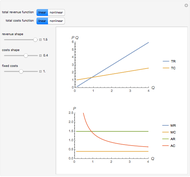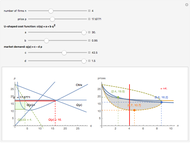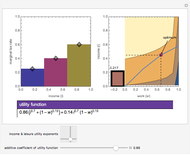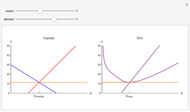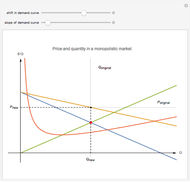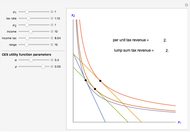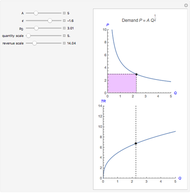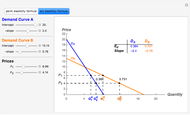Cost and Revenue for Monopoly and Monopolistic Competition

Requires a Wolfram Notebook System
Interact on desktop, mobile and cloud with the free Wolfram Player or other Wolfram Language products.
This Demonstration shows the cost and revenue situation when an industry is controlled by a monopolist or a monopolistic competitor. You can change the fixed and marginal costs as well as the slope and intercept of the demand function. Variable cost is shown in light blue and profit or loss is in red. Fixed costs are shown in yellow as well as with vertical lines (i.e., for cases in which part of the fixed cost is obliterated by the red loss area). The graph label changes to match the following cases: (1) the firm earns a positive economic profit; (2) the firm earns zero economic profit; (3) the firm produces with a loss; (4) the firm is indifferent between shutting down and producing with a loss (i.e., the firm is just at the shutdown point); and (5) the firm should shut down. The scale on the vertical axis can also be controlled.
Contributed by: Craig Marcott (March 2011)
Open content licensed under CC BY-NC-SA
Snapshots
Details
In the program, replace Manipulate with ControllerManipulate to hide sliders and control all the action with a game controller.
Definitions:
 output
output
 price
price
 equilibrium output
equilibrium output
 equilibrium price
equilibrium price
 demand (linear inverse demand function)
demand (linear inverse demand function)
TR total revenue = 

MR marginal revenue (derivative of total revenue with respect to output)
MC marginal cost (derivative of total cost with respect to output)
FC fixed cost (i.e., costs that do not depend on the level of output)
VC variable cost (i.e., costs that depend on the level of output)
TC total cost = FC + VC
AVC average variable cost = VC/
ATC average total cost = TC/
Economic Profit = total revenue - total cost
Loss = total cost - total revenue
Permanent Citation








